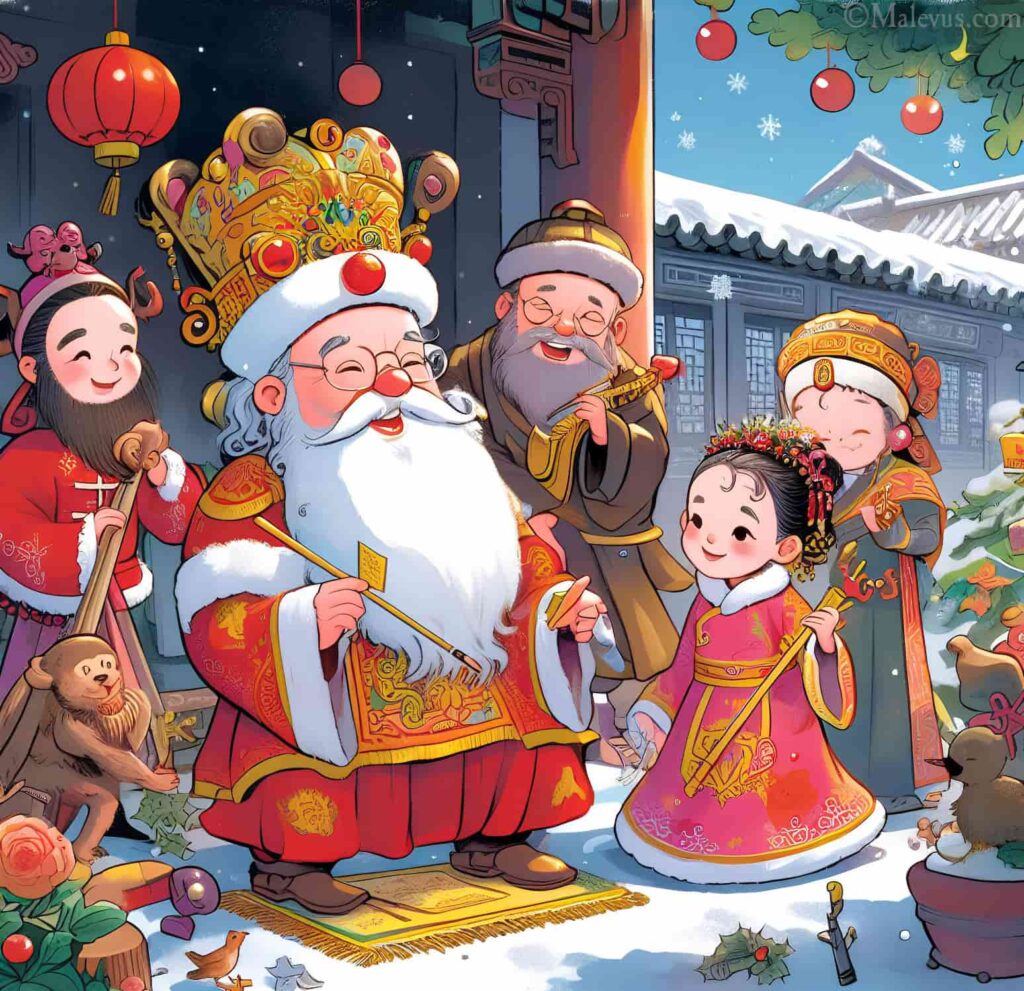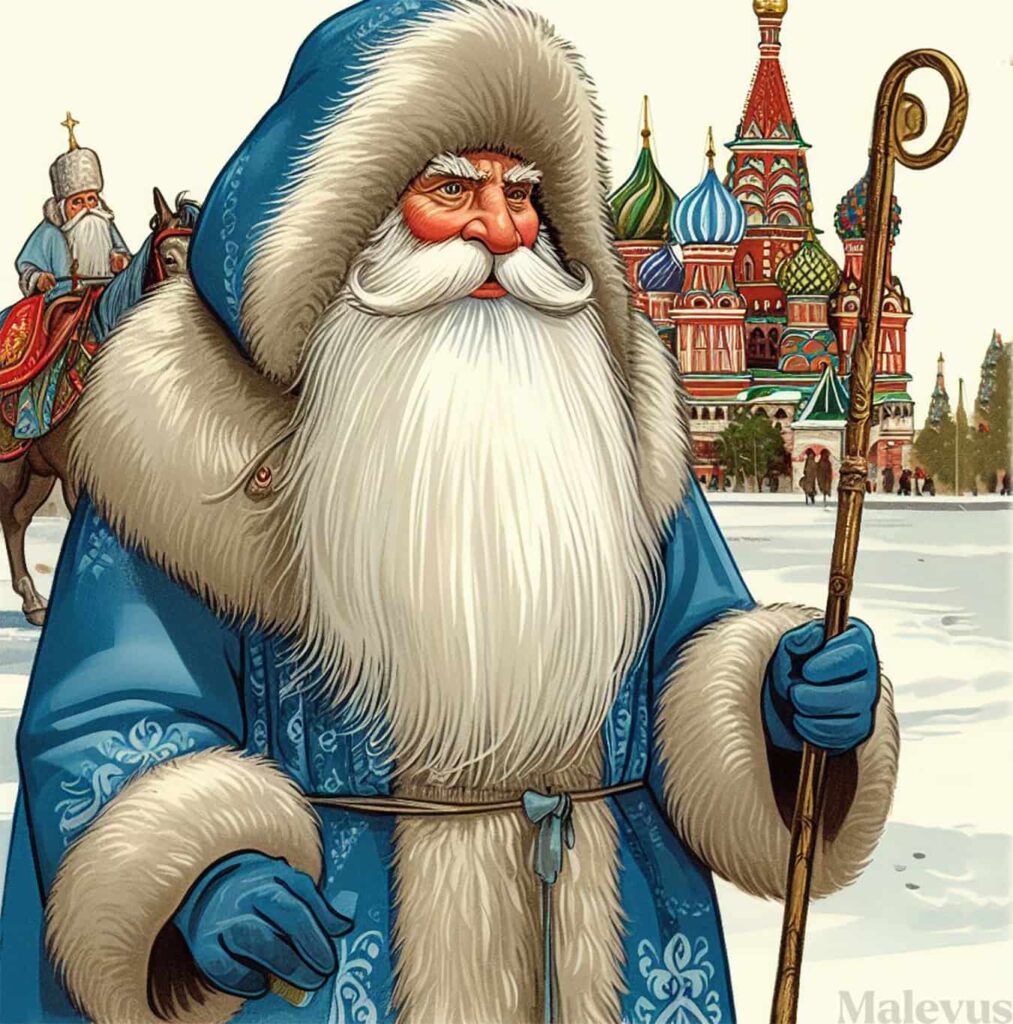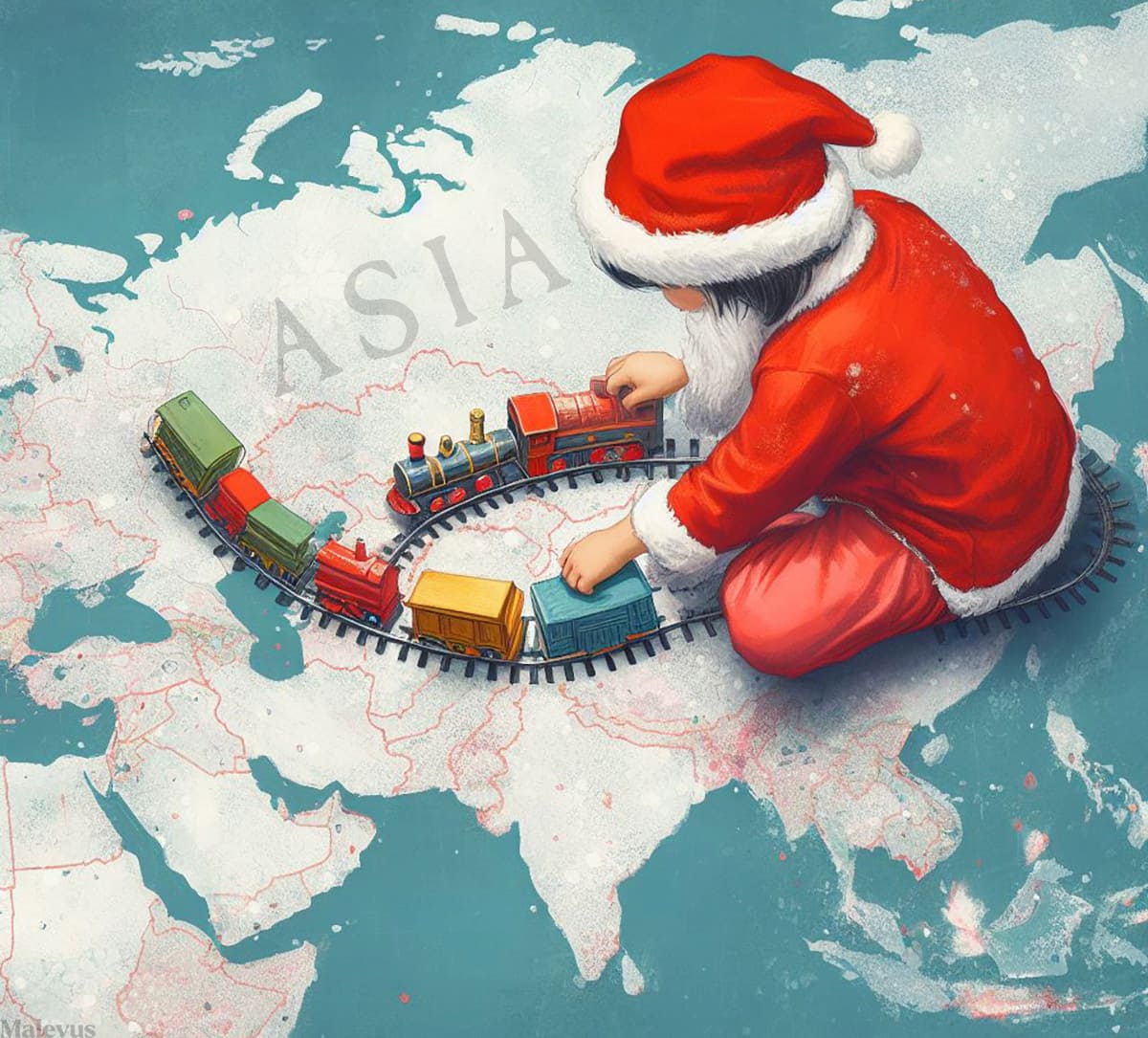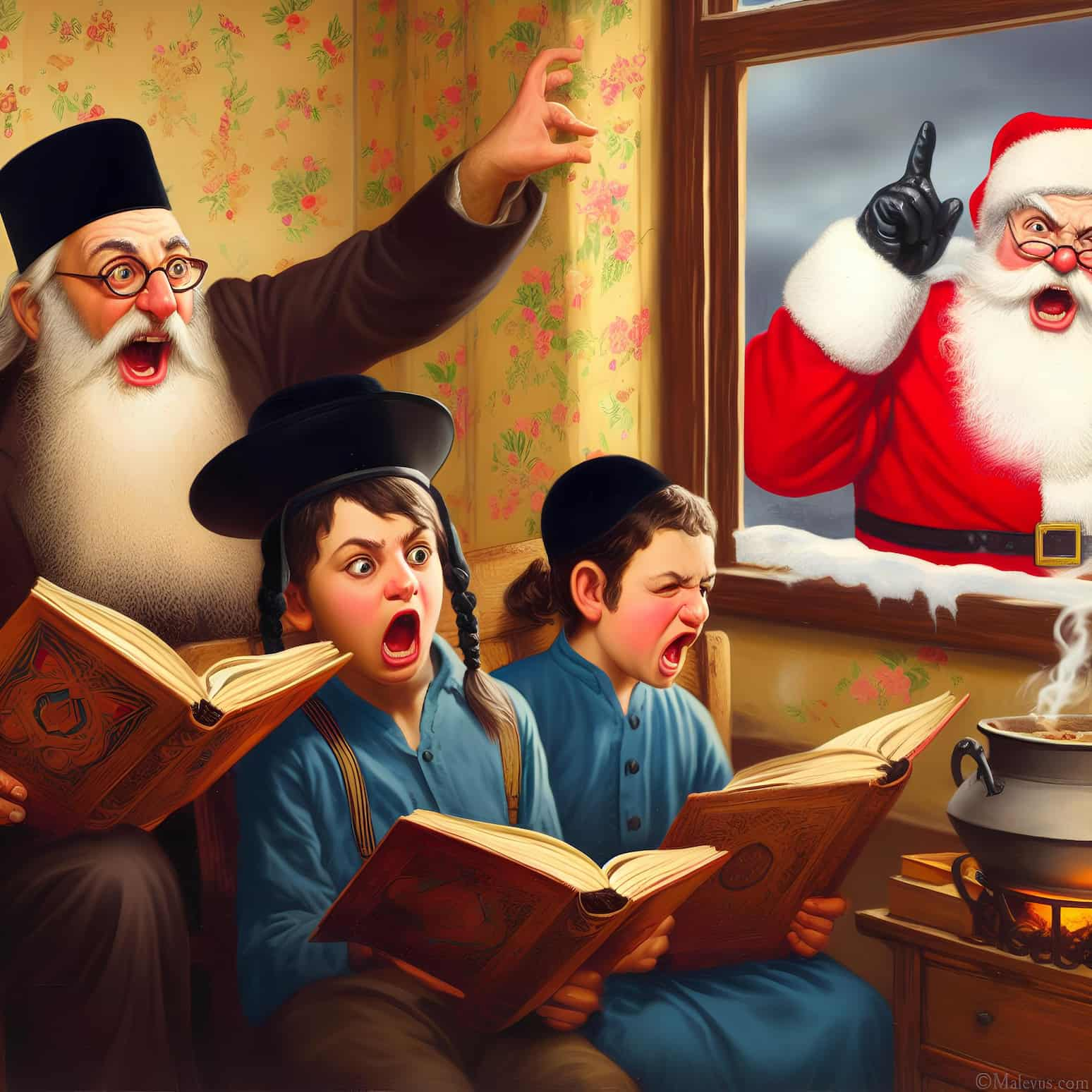Asian Christmas rituals include elements of Western and native cultures. Midnight Mass, Christmas cribs, and gift exchanges are widespread in Christian-prevalent Asian nations like India and the Philippines. Chinese and Japanese Christmases, on the other hand, are less about religion and more about commerce. Christmas is observed on January 7th in Kazakhstan, according to the Julian calendar, since the country has an Orthodox Christian community. The universality of celebration, charity, and family get-togethers is still widespread in most of the Asian countries listed below.
See also: 48 Countries That Celebrate Christmas Widely
1. India
-> 26 million Christians, Bada Din, Holy Banana, Biryanis, and Kheer
Millions in India celebrate Christmas, even though Hinduism is the dominant religion. Because Christianity is the third-largest religion in India with 26 million followers which is 2.3% of the population. The festival, which goes by the names “Bada Din” and “Big Day,” is observed with Indian and Western customs.
Attending Midnight Mass with poinsettia flowers and candles is also significant in India. Families share a meal of biryanis and households decorate their homes with clay lamps that burn oil and holy banana or mango leaves. Kheer, a rice pudding, is a popular traditional dish. Duck curry with appams is a typical Christmas dinner in Kerala, while Portuguese-influenced foods like sausage pulao, sorpotel, and xacuti are popular in Goa.
2. China

-> 44 million Christians, Holy Birth Festival, Tree of Light, Red Pagodas
The Christian minority in China (44 million Chinese Christians) celebrates Christmas as the Holy Birth Festival, or Sheng Dan Jieh. Their Christmas trees, which they refer to as a Tree of Light, are covered with paper lanterns, flowers, and red paper chains. They also display posters and evergreen plants throughout their houses. To decorate their homes, they make paper lanterns in the shape of red pagodas and stick them to the windows.
Various names for Santa Claus include “Old Christmas Man” (Sheng Dan Lao Ren) or “Nice Old Father” (Lan Khoong-Khoong). Chinese youngsters hang muslin stockings for Santa on Christmas Eve. Cities in China such as Beijing, Shanghai, and Hong Kong put up various Christmas decorations. Like on Valentine’s Day, young Chinese couples actually exchange presents with each other at Christmas festivities. In fact, Chinese people celebrate Christmas by going out to a restaurant.
See also: All 15 Countries That Don’t Celebrate Christmas
3. Indonesia
-> 29 million Christians, Christmas Decorations in Religious Buildings
Despite the country’s Muslim majority, Christians in Indonesia celebrate Christmas in a variety of ways.
- One unusual custom is the use of Christmas trees and lights in religious buildings.
- Going to Christmas Eve and Christmas Day church services to see plays and nativity scenes.
- Giving and receiving gifts, particularly among younger parties.
- Baking regional specialties include pineapple tarts (Nastar) and cheese biscuits (Kastengel), which have Dutch origins.
- Honoring local customs such as Yogyakarta’s Wayang Kulit performance, Jakarta’s Rabo-Rabo, Bali’s Ngenjot and Penjor, and North Sumatra’s Marbinda.
4. Turkey
-> 250,000 Christians, Noel Baba, Street Decorations and Fireworks
Since Muslims make up the vast majority of Turkey’s population, Christmas is not a very popular holiday in the “Asia Minor”. However, this has been changing in the recent decade due to the significant rise in the country’s secular youth population, especially in western Turkey. In main cities like Izmir, Istanbul, and Ankara, the nation gets into the holiday mood in the days leading up to New Year’s Eve, decked up in rich lights, decorations, and roadside displays.
Turkey does not actually celebrate Christmas but the New Year and they do it with Christmas decorations. “Noel Baba” (Father Noel), Turkey’s version of Santa Claus, is also not believed to deliver presents on New Year’s Eve since he isn’t widely affiliated with Christmas but the country put up extensive fireworks and street decorations to honor the New Year’s coming.
5. Japan

-> 2 million Christians and Romantic KFC Christmas Meals
Only a tiny fraction of Japanese people observe Christmas as a religious holiday; the rest celebrate it as a secular occasion to convey “love”. As a long-standing custom since 1974, eating fried chicken from KFC on Christmas Day is one of Japan’s distinctive customs. Because in Japan, Christmas is another Valentine’s Day.
One other thing that people do on Christmas is eat Christmas cake, which is a sponge cake filled with cream and strawberries. Couples go on strolls to see the Christmas lights and have a romantic Christmas dinner. The perception of Christmas is widely different than in the West.
6. South Korea
-> 14 million Christians, a Romantic Holiday, Ice Cream and Sponge Cakes
As a national holiday, Christmas is commemorated in South Korea by decorating churches and holding services. But most Koreans still don’t celebrate Christmas as a religious time. Couples go on romantic trips and shops are decked up in colorful decorations. The traditional Christmas fare is on the decline, but ice cream cakes and sponge cakes still dot the landscape in South Korea. Similarly in China and Japan, this is a romantic day for young couples.
7. Vietnam

-> 8,5 million Christians, “Ông già Noel,” Christmas Chicken Soap
Despite Vietnam’s Buddhist majority, it celebrates Christmas as one of its four major religious days. Christianity was first introduced to Vietnam in the early 16th century and 9% of the country’s population is Christian today. On Christmas Eve, people of all faiths and none come together to celebrate the day. The churches and public areas are decorated with nativity scenes and other typical lightworks. Christian families prepare meals that include chicken soup, turkey, and Christmas pudding, and Santa Claus is called Ông già Noel. Despite not being a recognized public holiday, Christmas is still widely celebrated in this land.
8. Philippines
-> 95 million Christians (84%), “Ber” Months, Christmas in September
The third largest Roman-Catholic country in the world, the “ber” months are the beginning of Christmas in the Philippines, and festivities begin as early as September, which is unique. Making traditional lanterns, listening to songs in stores, and stocking up on presents are ways that Christians and non-Christians in the Philippines commemorate this period.
Around $570 is how much the typical Filipino family spends on Christmas. On Noche Buena, the eve of Christmas, families enjoy traditional Filipino feasts that include lechon (roast pig), ham, rice cakes, fruit salad, and bibingka. In the early hours of Christmas morning, children anticipate Santa Claus’s arrival. Observing religious services, giving presents, and putting up nativity displays are customs. On January 6, or the first Sunday in January, the Feast of the Three Kings is celebrated, and it concludes Christmas in the Philippines.
9. Turkmenistan
-> 400,000 Orthodox Christians (6%), Mostly Muslim, 12 Orthodox Churches
Orthodox Christians in Turkmenistan are the only ones who celebrate Christmas in the traditional sense, and this is because Muslims make up the vast majority of Turkmenistan’s population. Observance of a 40-day Advent fast, during which time one should not consume anything that comes from an animal, culminates with a Christmas dinner on the evening of January 6. Orthodox Turkmenistan celebrates Christmas with a beautiful tree. The twelve Orthodox churches in the nation’s capital and adjacent cities including Mary, Turkmenabat, Turkmenbashi, Balkanabat, Tejen, and Bayramaly all participate in the festive services.
10. Thailand
-> 850,000 Christians (1.2%), Majorly Buddhist, Chinese New Year > Christmas
The majority Buddhist population of Thailand means that Christmas is not a tradition. Nonetheless, Bangkok has been experiencing a renewed sense of festive spirit in recent years. Downtown areas are dressed up for the holidays, and roadways are lit up with lights. Although Christmas is not officially celebrated, there are still certain Christmas-related activities that are limited to schools. Santa Claus still visits bigger shopping malls or family-friendly events. The special Christmas dinner is usually turkey with all the fixings, and they also have rice and curry. Instead, countless New Year’s festivities, including the Chinese New Year, as well as parties and fireworks, make up Thailand’s holiday season.
11. Russia

-> 68 million Christians (47.5%), “Sochelnik,” Ded Moroz, Snegurochka, Orthodox
Just like Turkey, Russia is a transcontinental country, with the majority of its lands situated in North Asia. According to their Julian calendar, Christmas in Russia is commemorated on January 7th. Known as “Sochelnik,” the celebrations start on Christmas Eve. Since New Year’s Day was more important in Soviet times, few people observed the festival, and since it was reinstituted as a holiday after the fall of the Soviet Union, Christmas is still a more subdued event than the New Year’s Eve parties in the country. Holiday traditions include feasting on traditional fare such as roast pig, goose, pirog, and pelmeni. This occasion is characterized by a solemn ambiance and a figure known as “Ded Moroz” (Grandfather Frost) gives gifts to youngsters with his female helper named Snegurochka.
12. Afghanistan
-> 17,000 Christians, Public Holiday, Nearly Not Observed
Due to the Muslim majority, Christmas is not a well-observed day in Afghanistan. But ironically the government officially recognizes Christmas as a public holiday, and a few thousand Christians are living there who celebrate the occasion. The “Haj” Eid, a Muslim festival akin to the Eid after Ramadan, is celebrated by Afghans in the days before Christmas.
There are still Christmas trees at stores and hotels in Kabul, the capital of the country, and the city is decorated with lights and ornaments. Despite the lack of typical Christmas fare, Afghans love their tea and drink it all day long, usually with some kind of sweet treats like toffee, almonds, or pastries. Christmas is still a subtle, low-key celebration.
13. Myanmar
-> 4,4 million Christians, Buddhist Majority, Christmas is a Low-Key Feast
Due to the Buddhist majority, Christmas is not well-observed in Myanmar. But the government actually recognizes Christmas as a public holiday. Traditional religious observances and family reunions are the focal points in Myanmar and parts of the nation, like Kayin State, celebrate Christmas by going door-to-door singing songs and decorating Christmas trees with ornaments. On December 1st, Christmas caroling starts, and on December 2nd, people assemble at homes to pray and give gifts, with children actually receiving generous presents. However, the emphasis in Myanmar is on other cultural and religious celebrations throughout the year; thus, Christmas is more subtle.
14. Uzbekistan
-> 3,1 million Orthodox Christians, Soviet Atheism, a Welcoming Spirit
People in Uzbekistan get into the holiday spirit by adorning Christmas trees and listening to traditional music. 9% of the population is Orthodox Christian which celebrates the holiday on January 7. Many Uzbeks celebrate the day with a mix of traditional and contemporary traditions. Despite the country’s largely Muslim culture, the Uzbek people’s welcoming spirit shines through in their Christmas celebrations since they are the most numerous Turkic people in Central Asia and there is a historical influence of Soviet atheism.
15. Malaysia
-> 3 million Christians, “Open Houses,” a Welcoming Day
Christians in Malaysia celebrate Christmas, which is also a national holiday. Church services, gift exchanges, and feasts with loved ones are common occasions. One typical habit is having an “open house,” where visitors are welcomed with traditional Malaysian hospitality and served dishes for Chinese New Year, Hari Raya Puasa, Deepavali, and Christmas. Even though most Christians commemorate Christmas seriously, the country’s cultural diversity is on full display during other holidays, such as Hari Kebangsaan (National Day), which is observed by different ethnicities. Christmas celebrations are also lively and welcoming.
16. Nepal
-> 512,000 Christians, Christmas is a Public Holiday, 81% are Hindu
A fusion of Western and native traditions characterizes Nepalese Christmas. The local Christian community (%1.8 of the population) commemorates this officially recognized holiday along with other secular Nepalese groups. But 81% of the population is still Hindu and Christmas traditions are not widespread.
Church services, gift exchanges, tree decorations, and special Christmas feasts are still there as expected, and Western delicacies like turkey, pumpkin pie, and Christmas pudding are served with traditional Nepalese cuisine like roasted chicken and vegetable salad. Candles and diyos (oil lamps) are common, and Christmas markets in Kathmandu sell local specialties.
17. Bangladesh
-> 0.30% (700,000 Christians), Borodin, Sweet Rice Cakes and Coconut
The small Christian minority in Bangladesh celebrates Christmas, which is called “Borodin” or “Bara Din,” even though the majority of the population is Muslim. Singing, dancing, and reunions of family members; decorating houses; and putting up Christmas trees, lights, and decorations are the main traditions and practices. Many Bangladeshi cities are decorated with artificial snow since snow is not possible in the country.
Christmas is gaining traction, but women still sit on the opposite side of the aisle from men in Bengali churches. In the churches, you will hear the popular Bangladesh Christmas song “Aaj Shuvo Borodin bhai, aaj Shuvo Borodin,” which translates to “Today is Happy Borodin, friend or brother; today is Happy Borodin.” A traditional Christmas feast known as Preeri-bhoj is cooked at the church after Christmas services. Sweet rice cakes and coconut are two of the traditional Bengali foods.
18. Mongolia
-> 1.3% (42,900 Christians), New Year Celebrations, New Year Trees
Due to the country’s Buddhist majority, Christmas is generally not observed. Christians make up a tiny percentage and the 2010 National Census found around 42,900 of them, or 1.3% of the total. Evening services or celebration concerts are held by Mongolian Christian churches. Christmas is not a legal holiday in Mongolia, but the New Year is a major festival and Christmas is not celebrated to the same extent.
Mongolians call their trees “New Year’s Tree,” which looks a lot like a Christmas tree. Dinners, parties, and gatherings in homes, nightclubs, and bars are common elements of Mongolian New Year festivities. They welcome the new year with a week of festivities leading up to December 31, while ignoring Christmas as a separate day.
19. Kyrgyzstan
-> 7% (460,000 Christians), “Father Frost,” Soviet Atheism
Kyrgyzstan has a mostly Muslim population and a history of Soviet atheism; therefore Christmas isn’t really celebrated there. But a New Year’s tree, like a Christmas tree, is traditional in the country, as is welcoming “Father Frost” (a Santa Claus-like character in a blue dress).
20. Kazakhstan
-> 17% (3.2 million Christians), “Ayaz Ata”, “Kar Kız”
Christmas is celebrated on January 7th by the Christian population in Kazakhstan, especially by those who are Orthodox. As part of the festivities, Christians fast from certain foods for forty days leading up to Christmas. The first star seen in the sky on January 6th marks the conclusion of Advent and the beginning of the traditional Christmas supper. But Christmas isn’t as much of a deal as New Year’s Eve; thus, the Kazakhs celebrate the latter with great joy, complete with a New Year tree, Father Frost (Ayaz Ata in Kazakh), and the Snow Maiden (Kar Kız), who brings gifts to kids.
21. Azerbaijan
-> 365,000 Christians (4%), “Shakhta Babah,” New Year’s Eve, Shekerbura
Azerbaijan does not recognize Christmas as a national holiday. Azerbaijanis celebrate Novruz Bayram and New Year’s Eve. The small percentage of the population that celebrates Christmas does so because it is a long-established custom in their families. Some people do it because they find the celebration lovely and like the symbolic meanings it has. The local Santa Claus is Shakhta Babah, and Azerbaijani families put up lights and decorations for New Year’s Eve. Shekerbura is a traditional Azerbaijani pastry that includes almonds, and it is one of the foods enjoyed at Christmas.
22. Brunei
-> 38,500 Christians (8.7%), Christmas is Banned, 440,000 Residents
Due to the country’s stringent Islamic rules, Brunei does not allow public Christmas festivities. Public Christmas festivities are subject to regulations put forth by the Ministry of Religious Affairs, which has stressed that Muslims’ religion might be jeopardized by too many celebratory events. Public Christmas festivities are also forbidden, and the removal of Christmas decorations from public spaces is part of the ban. On the other hand, locals and tourists who aren’t Muslims are free to celebrate the day, albeit privately. There are 441,000 residents living in this country.






